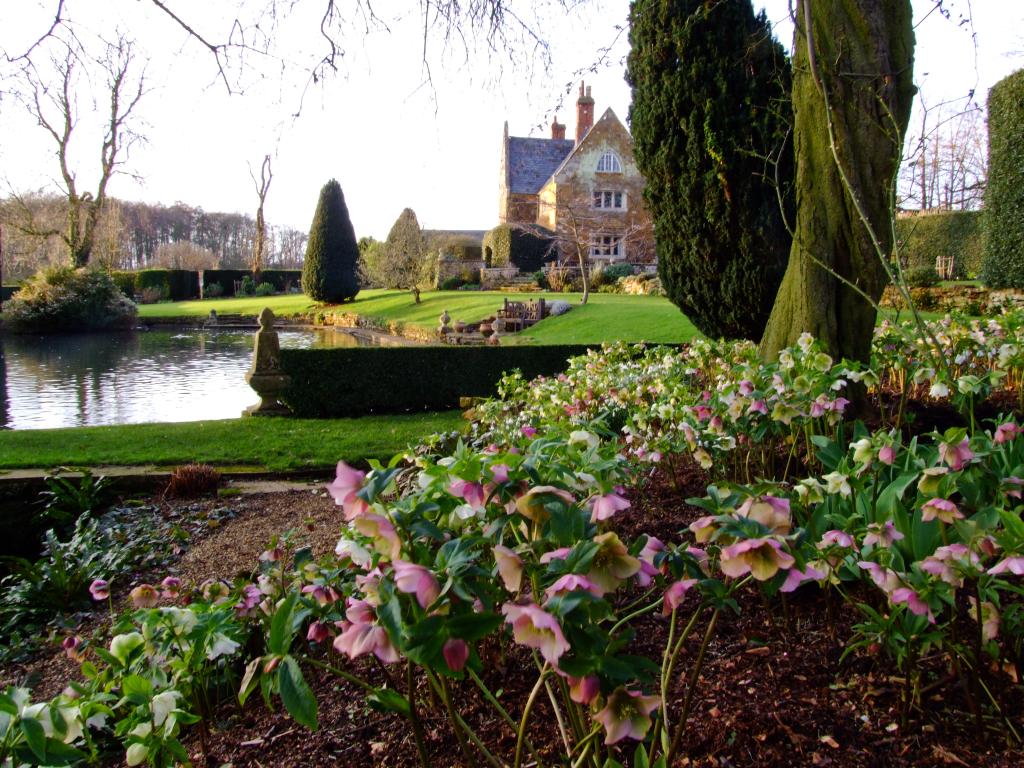All About Hellebore; the Lenten Rose
Hellebores, Lenten Rose, Winter Rose… whatever you call them, these plants are outstanding! The name hellebore comes from the genus name Helleborus. Most of the Hellebores available are Helleborus orientalis or a hybrid Helleborus x hybridus.
There aren’t many shade to part sun perennials that are evergreen and bloom. And hellebores might just be the only winter blooming one hardy in our area! Leathery leaves stay present year round; remove damaged leaves as they appear or in clean ups each season. The thick leaves of the hellebores are fairly deer and rabbit resistant.
This is one of those perennials that sleep, creep, then leap! The first few years, the plant focuses on root growth, then the clump will get slightly larger… and if they are planted in a good location and have gotten the right care, they take off. We talk to customers all the time, that planted them and then kind of ignored them and a few years after planting, their almost forgotten plants become the star of their shade gardens!
Hellebore Blooms
Older varieties of hellebores have nodding blooms that face downward. Breeding has been focused on the development of larger blooms, and blooms that face upward. What we see as flowers are actually the sepals of the bloom; the flowers themselves are inconspicuous.
‘Flowers’ are generally shades white, rose, purple, and green. Some varieties have spotted flowers, others are bicolor or streaked, and still others are double. Hellebore flowers can be up to 2 inches in diameter! Size of plant, flower color and other attributes are variety specific.
You might notice that double flowers usually face downwards. This is a natural growth pattern to protect the blooms from rain, since water sheds well off the downward facing blooms.
Inventory changes all the time so if you are coming from a distance, give us a call to confirm we have your desired variety. We usually get hellebores around mid-March, and sell out during the spring months. Visit this link for current inventory, and check our social media pages for images of new arrivals!
Where to Plant Hellebores
Like many of our landscape plants, they like well drained soil; if the roots stay too wet, issues will arise.
Here in central Arkansas, protection from the hot afternoon sun is needed. Plant in part sun areas that get morning sun or dappled afternoon sun. Although the plants grow well in shady spots, if the shade is too dense, they may not flower well.
How to Plant Hellebores
Because the soils in our area tend to contain clay and lack organic materials, we suggest amending your soil when planting landscape plants. A 70% native soil to 30% soil amendment is a good ratio to keep in mind. To help roots get established, use our Good Earth brand Jump Start at planting.
Take note of where the plant crowns are in the pot before planting. The crown is where the stems meet the soil; and it’s important to keep this area at or slightly above the surrounding soil level. Planting hellebores too deep can cause plant decline or even plant death. This is also true with another shade perennial, heuchera and relatives, tiarella and heucherella.
A good general rule of thumb is to dig a hole at the same depth as the root ball of the plant you are about to plant and twice as wide. However, hellebores grow deep roots so consider digging deeper than the pot and amending the soil underneath where the root ball will sit. This can be a little tricky because this amended soil will settle some and it’s key to keep hellebore crowns above soil level, as we mentioned above. If you choose to dig down and amend the soil at the bottom of the planting hole, you might need to play with the soil level to insure crowns stay at least an inch above surrounding soil level.
Feeding and Caring for Hellebores
Hellebores don’t require much fertilization; light applications of compost and a slow release natural fertilizer in the spring should be sufficient. The Jump Start we mentioned above works well as a top dressing of natural fertilizer. Whatever fertilizer you use, keep it away from the crown of the plant as even mild fertilizers on the crowns can cause damage.
Crowns need to remain above surrounding soil and mulch; for that reason, don’t apply too much mulch around crowns. Light mulching only around hellebores.
Hellebores can get scale, a destructive insect pest. Scale can be easily missed because they are usually on the underside of leaves. Check your plants several times a year and treat as needed.
Division is seldom necessary but if needed, they can be divided in the fall. Make sure each division has at least three growth buds. Transplanting is also best done in the fall.
